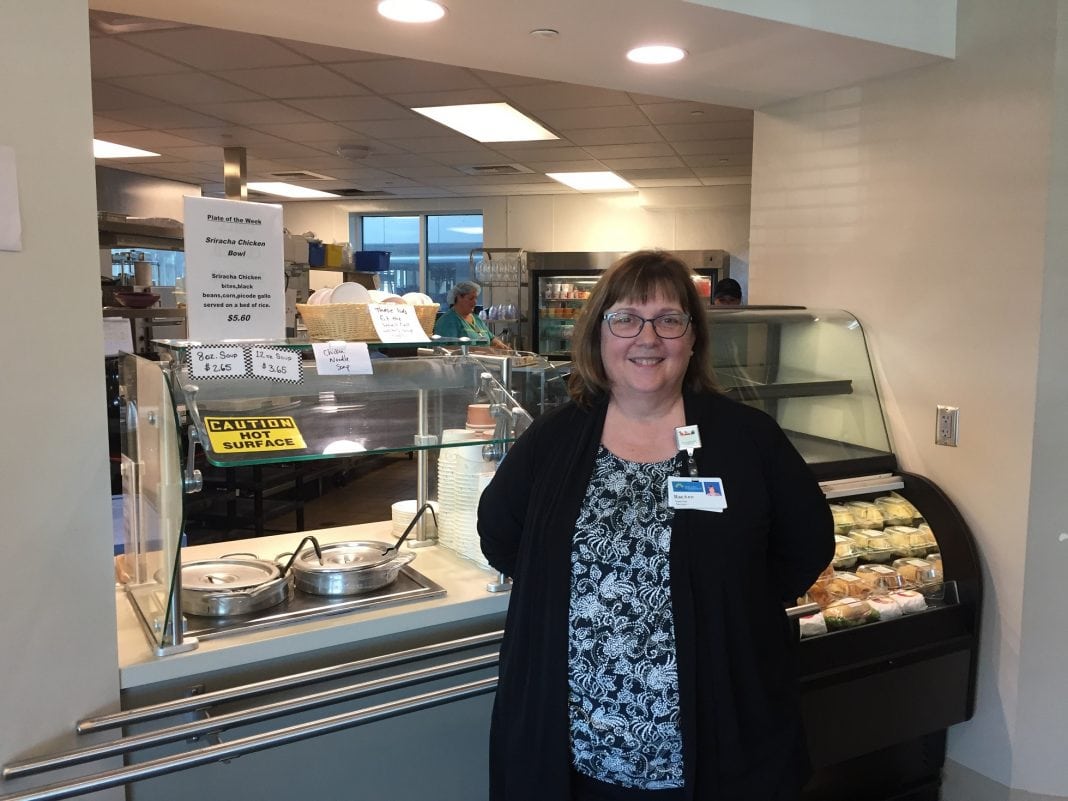Rae Ann Brown, Supervisor of Nutrition Services, has worked at Grays Harbor Community Hospital (GHCH) for over 30 years. She is just one of several in the department who have spent decades serving the nutrition needs of hospital staff, patients and their families. “We’ve dedicated our lives to doing what’s right for our community, and we believe in the hospital,” declares Brown.

Brown leads a kitchen staff that handles all things food-related at the hospital, from patient meals to the cafeteria and vending machines. As GHCH continues to adapt to the changing needs of the community, Nutrition Services works to find the right balance between efficiency and customer satisfaction. Over the past few months, the department has begun implementing a growth model.
“We provide a dual service,” explains David Bain, Director of Plant Services, which includes Nutrition Services. “It’s all about providing more options to the staff and hospital visitors, which in turn increases our ability to meet our primary goal of caring for the dietary needs of the patients.”
When strategic changes at the hospital included restructuring within Nutrition Services, Brown and her staff were disconcerted to find a temporary dip in customer satisfaction. “The Nutrition Services group is incredibly customer-focused,” says Bain. “They enjoy making people happy, and their desire to care for the patients is truly amazing.”
The department immediately began brainstorming ways to increase the services they provide and address customer concerns. They have solicited feedback from staff and from patients and have begun implementing a multi-faceted plan for growth.
The Oasis
The first element of that plan is set to go live on October 2. Brown refers to the initiative as the Oasis. In the tradition of the micro-mart trend, the hospital cafeteria will have a variety of menu options available 24 hours a day, 7 days a week. The Oasis will initially serve hospital staff, with eventual plans to extend to the public.

Micro-marts have emerged as a growing trend in hospitals and businesses across the country. When employees, such as surgical staff, work round the clock, they need access to more healthy and varied menu options than the standard vending machine can provide. Micro-marts effectively provide a small convenience store with self-checkout capabilities.“You can essentially open the fridge and grab what you want, then scan it yourself, pay and leave,” explains Bain.
Local Flavors
A second initiative involves what Bain calls Local Flavors. In an effort to provide more variety and flair to the cafeteria, he and Brown have begun talking with local restauranteurs about bringing some of their offerings to the hospital. The goal is to offer niche items that reflect the community and the restaurants the staff and visitors already know and love.
Expansion
A third piece of the growth strategy will involve an expansion within the cafeteria to bring in more comfort foods. “I get a little bit of a sideways glance from our registered dietitian about this one,” chuckles Bain. “But when it’s 2:30 in the morning, and you have just finished a stressful surgery, sometimes ice cream is necessary.”

Along with the new initiatives, the cafeteria will continue to provide breakfast and lunch for staff and the public between 8:00 a.m. and 1:30 p.m. And the kitchen staff will continue to carefully address the dietary needs of hospital patients with help from registered dieticians.
In addition to increasing customer satisfaction, an immediate goal of the growth strategy is to give Nutrition Services more revenue and thus more flexibility to accommodate the return of the popular Room Service option for patients. This service allows patients to pick up the phone and order what they want for a meal. “Room Service is a huge satisfier,” reports Bain. “We had very low waste, very low incidents of dietary issues. It’s an important piece of the excellent service we desire to give our patients. By November, Room Service should be back.”
In the end, for Nutrition Services as well as for the rest of the staff at GHCH, it all comes down to community. “It’s our hospital, and we want it to be working right,” states Brown. “This is where we come for our own care. We know our community. We love our community.”
Sponsored











































